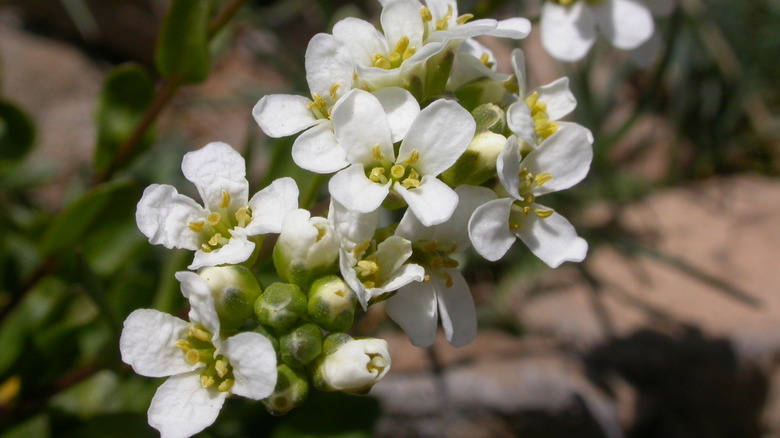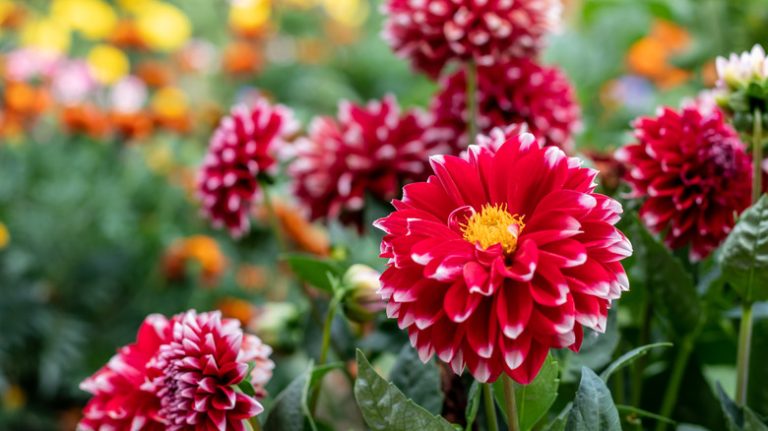Krzyszt/CC BY-SA 4.0/Wikimedia Commons
Alpine pennycress is getting some attention as a weed you should consider keeping in your lawn and garden. It’s an unassuming little “weed” with a superpower: it can remove toxic heavy metals from your soil. There’s a lot of research to support this, and it’s a promising approach for the cleanup of contaminated sites. Your lawn very well could be one such contaminated site, but there’s a catch or two. The most important is that your lawn might not be in the right country.
Sometimes, when you read about the environment-purifying qualities of certain plants, you have to take the claims with a grain of … arsenic, maybe. Even solid evidence-based research can be misleading without enough context. That’s how you end up with a NASA study famous for declaring that some potted plants can clean the air in your house, though it doesn’t prove any such thing. At a minimum, while some houseplants can purify air to some extent, it’s a complicated issue. But some plants can do the magic they’re rumored to, like alpine pennycress.
Thlaspi caerulescens, popularly known as alpine pennycress, can accumulate heavy metals like arsenic, lead, cadmium, and zinc at levels that make it a hyperaccumulator of heavy metals. A hyperaccumulator is what scientists call a plant that can store at least 100 times as much as ordinary plants can. That’s a good thing, so why might you reconsider it in your lawn?
There are two alpine pennycresses

Matt Lavin/CC BY-SA 2.0/Wikimedia Commons
If you’re thinking that a field of alpine pennycress is just what the doctor ordered to clean up your abandoned mineshaft, there are a few gotchas. First and most importantly, the research indicates that while the variety of pennycress that’s native to southern France (T. caerulescens) can clean up several heavy metals, the variety that grows in the U.S. (T. montanum) only removes significant amounts of nickel. And that’s good because high levels of nickel can be disastrous for plant populations, most of which can’t tolerate it. It’s bad for people, as well. The trouble is that both of these varieties are called alpine pennycress, which has led some to mistakenly claim the alpine pennycress at the edge of your lot can do the things only the European alpine pennycress can actually do.
Scientists and master gardeners use binomial nomenclature –- those unpronounceable two-word scientific names –- for plants, bugs, and other living things just to avoid problems like this. And even that system is fraught with problems. In fact, T. caerulescens has at least 16 different scientific names. But at least we can be reasonably sure T. caerulescens is one plant and T. montanum is another entirely, an advantage we don’t get from calling both “alpine pennycress.”
Other reasons to pause your pennycress farm
Joan Simon/CC BY-SA 2.0/Wikimedia Commons
The other problem is that alpine pennycress is a small plant that doesn’t have a lot of biomass, so it can’t store enough heavy metals to clean up a really toxic area. And even if you did grow it, you’d need some means of harvesting it efficiently to reap its benefits; otherwise, some of the heavy metals would just be returned to the soil as the annual decays. It would be nice to reduce heavy metals in your property’s soil, which can find its way there in several ways, including via common items you might use in your yard. But at the moment, this property of alpine pennycress is mostly used by researchers to investigate new ways to deal with contamination.
Interestingly, T. montanum, the alpine pennycress that grows in the western U.S., turns out not to be from the U.S. at all. It’s an invasive, though not entirely objectionable, transplant from Europe. So it’s possible that its French cousin could also make its way here and set up shop. And maybe all this research will allow T. caerulescens to be permitted as an import for planting (as a cover crop, for example). Then, all those articles proclaiming the benefits of alpine pennycress will suddenly be true … assuming you happen to have the right one. Please note that while some fans report that pennycress is edible, this might be inadvisable given the plant’s habit of storing high levels of heavy metals.
